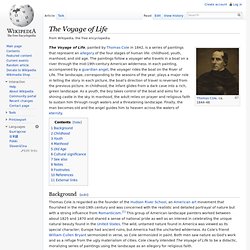

Portrait of Count Stanislas Potocki. The Portrait of Count Stanislas Potocki is a 1781 equestrian portrait of the Polish patron, politician and writer Stanisław Kostka Potocki by the French painter Jacques-Louis David.

It was painted in Rome when the artist and subject met during David's stay at the Villa Medici after winning the first prize for painting in the Prix de Rome, and chronologically after his Saint Roch interceding with the Virgin for the Plague-Stricken and before Belisarius begging for alms.[1] Its equestrian format is owed to influences from Rubens.[2] Notes[edit] ^ Jump up to: a b c (English) Grand Palais (Paris, France), Detroit Institute of Arts, Metropolitan Museum of Art (New York, N.Y.) (12 June-7 Sept., 1975). French painting 1774-1830: the age of revolution. Metropolitan Museum of Art. p. 363. External links[edit] Media related to Equestrian portrait of Stanisław Kostka Potocki at Wikimedia Commons (Polish) Portret Stanisława Kostki Potockiego. File:Caesar van Everdingen Count Willem II of Holland Granting Privileges.jpg. Recent Entries. Asher brown durand. Thomas Cole. The Course of Empire. The Course of Empire is a five-part series of paintings created by Thomas Cole in the years 1833–36.

It is notable in part for reflecting popular American sentiments of the times, when many saw pastoralism as the ideal phase of human civilization, fearing that empire would lead to gluttony and inevitable decay. The theme of cycles is also one that Cole returned to frequently, such as in his The Voyage of Life series. The series was acquired by The New-York Historical Society in 1858 as a gift of the New-York Gallery of Fine Arts,[1] and comprises the following works: The Course of Empire – The Savage State; The Course of Empire – The Arcadian or Pastoral State; The Course of Empire – The Consummation of Empire; The Course of Empire – Destruction; and The Course of Empire – Desolation.
The series of paintings depicts the growth and fall of an imaginary city, situated on the lower end of a river valley, near its meeting with a bay of the sea. The Voyage of Life. Background[edit] Thomas Cole is regarded as the founder of the Hudson River School, an American art movement that flourished in the mid-19th century and was concerned with the realistic and detailed portrayal of nature but with a strong influence from Romanticism.[1] This group of American landscape painters worked between about 1825 and 1870 and shared a sense of national pride as well as an interest in celebrating the unique natural beauty found in the United States.

The wild, untamed nature found in America was viewed as its special character; Europe had ancient ruins, but America had the uncharted wilderness. As Cole's friend William Cullen Bryant sermonized in verse, so Cole sermonized in paint. Both men saw nature as God's work and as a refuge from the ugly materialism of cities. Cole clearly intended The Voyage of Life to be a didactic, moralizing series of paintings using the landscape as an allegory for religious faith.
Childhood[edit] Youth[edit] Manhood[edit] Old Age[edit] [edit] John Constable - The complete works. Drawings. Official Website - Home Page - Richard Bunkall. William Wray. Ujean&Glazyrin. CG artists' portfolio. Thomas Cooper Gotch.